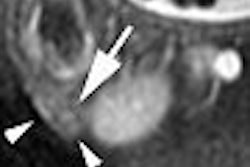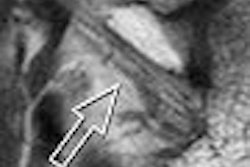We've received a report of a major MRI equipment vendor suspending a scheduled cryogen fill for one of its clients' MR systems until the vendor's engineer could make modifications to the cryogen vent (quench pipe). According to the source at an undisclosed hospital, this modification was being made in an effort to interrupt the chain of events that led to a recent catastrophic failure of the MR scanner. The million-dollar question this leaves for all MR operators is this: Is your quench vent safe?
Per the report we received, the vendor alerted its client that modifications to the cryogen vent would need to be made prior to allowing a cryogen fill. Purportedly, the service engineer entered the magnet room after hours and drilled holes into the vent pipe to enable it to drain any collected water. The newfound concern for water accumulating in the quench pipe is purportedly a reaction to a catastrophic quench failure that occurred earlier this year.
Recently, I had a conversation with a technical representative from a different MR vendor. It turns out that the recently destroyed MR is the talk of the industry and everyone has thoughts on the causes. Apparently, at this other MR vendor's recent meeting of technical representatives, the failed magnet was a main topic of conversation.
A difficulty in identifying any global issues with cryogen vent pipe systems is that a typical installation involves components and work by at least three parties: the magnet vendor, the radiofrequency (RF) shield vendor, and the mechanical contractor. Add to this the variability of building designs, the length of the quench pipe, the direction of the pipe run, and the design of the discharge.
At the current time we don't know the specifics of the quench pipe installation that worried the MR vendor to a point where it felt that an immediate field modification was needed. What we can be fairly certain about is that, even with all of the variability in design, similar conditions are likely scattered throughout the world, mixed in among the tens of thousands of installed MRIs.
Is this an issue unique to one vendor's MRI or installations? Highly unlikely since we've seen damage to other vendors' magnets resulting from poor cryogen vent designs. It is more likely that similar worrisome conditions exist in installations for all the major MRI equipment vendors.
So what is this condition that sparks such a concern? Unfortunately, for that we'll have to wait.
In the meantime, there will be thousands of MRI techs operating superconducting MR systems, who will be staring at their magnet room ceilings, imagining their cryogen vent pipes above, and wondering if theirs is next to receive a midnight modification. Or worse yet, if theirs accidentally gets passed over for a much-needed correction that could protect the MR scanner and those in the room!
By Tobias Gilk
AuntMinnie.com contributing writer
July 3, 2007
Reprinted from www.mri-planning.com by permission of the authors. If you would like more information on any aspect of MR facility design or safety, please contact Robert Junk or Tobias Gilk at MRI-Planning.com.
Related Reading
Stand around and wait -- stat! What's your imaging suite emergency procedure? June 11, 2007
MR guidelines: Elevating standards of practice and care, May 10, 2007
MRI and patient safety: Still waiting to go global, April 24, 2007
An open letter to MRI equipment vendors, April 12, 2007
MR suite level designations: Don't let complex procedures overwhelm your facility, March 27, 2007
Copyright © 2007 MRI-Planning


.fFmgij6Hin.png?auto=compress%2Cformat&fit=crop&h=100&q=70&w=100)





.fFmgij6Hin.png?auto=compress%2Cformat&fit=crop&h=167&q=70&w=250)











